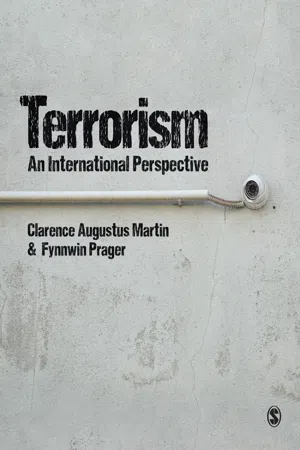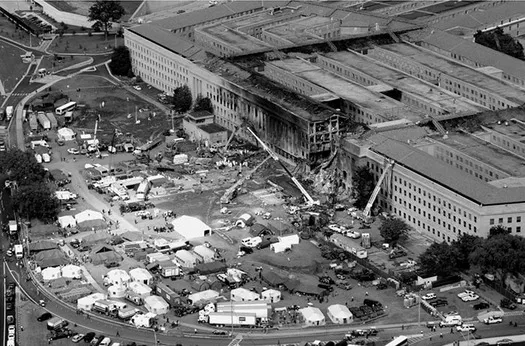
- 800 pages
- English
- ePUB (mobile friendly)
- Available on iOS & Android
About this book
A comprehensive investigation of modern terrorism and the global terrorist environment. The book uses a multidisciplinary approach and discusses an array of global case studies from the ideology of ISIS, to the Orlando Mass Shooting, and State-Sponsored Terrorism in Iran and Pakistan, to provide readers with an in-depth account of international terrorist violence, from its emergence through to events taking place today.
Key topics examined in the book include:
- The Causes of Terrorism
- Terrorist Violence and the Role of the Media
- Cyberterrorism
- Gender-Selective Terrorism
- The Lone Wolf Theory
- The Future of Terrorism
The book issupported by online resources for students and lecturers, including: PowerPoint slides for each chapter, a sample syllabus, a list of films and documentaries related to key concepts in the book, and access tofree SAGEjournal articles.
Suitable reading for students studying Terrorism, International Terrorism, and Counter-terrorism.
Frequently asked questions
- Essential is ideal for learners and professionals who enjoy exploring a wide range of subjects. Access the Essential Library with 800,000+ trusted titles and best-sellers across business, personal growth, and the humanities. Includes unlimited reading time and Standard Read Aloud voice.
- Complete: Perfect for advanced learners and researchers needing full, unrestricted access. Unlock 1.4M+ books across hundreds of subjects, including academic and specialized titles. The Complete Plan also includes advanced features like Premium Read Aloud and Research Assistant.
Please note we cannot support devices running on iOS 13 and Android 7 or earlier. Learn more about using the app.
Information
Part I Terrorism A Conceptual Review

(Source: Stocktrek Images/Getty Images; editorial # 120373299)
1 Terrorism First Impressions

The Ideology of Al-Qa’ida
- The struggle is a clash of civilizations. Holy war is a religious duty and necessary for the salvation of one’s soul and the defense of the Muslim nation.
- Only two sides exist, and there is no middle ground in this apocalyptic conflict between Islam and the forces of evil. Western and Muslim nations that do not share Al-Qa’ida’s vision of true Islam are enemies.
- Violence in a defensive war on behalf of Islam is the only course of action. There cannot be peace with the West.
- Because this is a just war, many of the theological and legal restrictions on the use of force by Muslims do not apply.
- Because US and Western power is based on their economies, mounting large-scale mass casualty attacks that focus on economic targets is a primary goal.
- Islamic governments that cooperate with the West and do not adopt strict Islamic law are apostasies and must be violently overthrown.
- Israel is an illegitimate nation and must be destroyed.
Note

(Source: US Department of State Rewards for Justice)
- How has the new terrorist environment affected traditional terrorist profiles?
- How has traditional terrorism been affected by the collapse of revolutionary Marxism?
- What is the likely impact of “stateless” international terrorism?
- First Considerations
- Conceptual Considerations: Understanding Political Violence
- Terrorism and Criminal Skill: Three Cases From the Modern Era
First Considerations
- An Overview of Extremism and Terrorism
- Terrorism at First Glance
- Sources of Extremism and Terrorism
An Overview of Extremism and Terrorism
Extremism is more an issue of style than of content … Most people can hold radical or unorthodox views and still entertain them in a more or less reasonable, rational, and nondogmatic manner. On the other hand, I have met people whose views are fairly close to the political mainstream but were presented in a shrill, uncompromi...
Table of contents
- Cover
- Half Title
- Publisher Note
- Title Page
- Copyright Page
- Acknowledgements
- Brief Contents
- Detailed Contents
- Online Resources
- About the Authors
- Acknowledgments
- Introduction and Rationale
- Part I Terrorism A Conceptual Review
- 1 Terrorism First Impressions
- 2 The Nature of the Beast Defining Terrorism
- 3 The Past as Prologue History of Terrorism
- 4 Beginnings The Causes of Terrorism
- Part II The Terrorists
- 5 Terror From Above Terrorism by the State
- 6 Terror From Below Terrorism by Dissidents
- 7 Violence in the Name of the Faith Religious Terrorism
- 8 Violent Ideologies Terrorism From the Left and Right
- 9 Terrorist Spillovers International Terrorism
- 10 Emerging Terrorist Environments Gender-Selective Political Violence and Criminal Dissident Terrorism
- Part III The Terrorist Trade and Securing the Homeland
- 11 Tools of the Trade Tactics and Targets of Terrorists
- 12 The Information Battleground Terrorist Violence and the Role of the Media
- 13 Counterterrorism The Options
- 14 Domestic Security A Comparative Analysis
- Part IV Final Analysis
- 15 What Next? The Future of Terrorism
- Appendix A Map References
- Appendix B Prominent Persons and Organizations
- Glossary of Terms
- Index